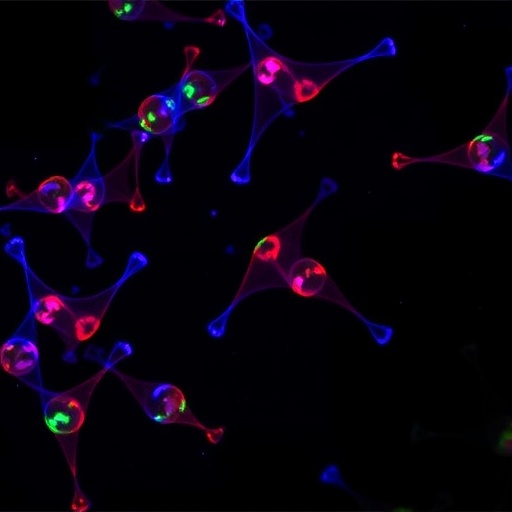Per- and polyfluoroalkyl substances, commonly dubbed PFAS, represent a broad class of man-made chemicals celebrated for their extraordinary stability and unique performance characteristics. These compounds have become indispensable in an array of industrial operations and consumer products, ranging from firefighting foams to non-stick cookware and water-resistant fabrics. Yet, the very chemical properties that make PFAS so valuable—particularly their resistance to heat, water, and oil—also render them persistent environmental pollutants. Emerging research underscores that PFAS contamination is far more pervasive than previously thought, sparking concern about the potential health ramifications for communities worldwide.
Historically, the scientific focus on PFAS exposure has concentrated primarily on drinking water contamination—often linked to industrial discharges, firefighting activities, or landfill leachates. However, as public awareness grows, researchers are turning their attention toward the residential environment to obtain a more comprehensive understanding of exposure pathways. This shift is critical, given that individuals spend the majority of their time indoors, where subtle but chronic exposures within home settings could cumulatively contribute to their overall PFAS burden.
A groundbreaking study recently published in the Journal of Exposure Science & Environmental Epidemiology addresses this research gap by employing a novel multimedia sampling approach to assess PFAS presence in various facets of the residential setting. By measuring concentrations across multiple media—including indoor dust, drinking water, and air—investigators aim to unravel the complex network of exposure sources that dwell within homes, transcending the traditional focus on water alone.
The investigation adopts cutting-edge analytical techniques capable of detecting ultra-trace levels of PFAS compounds, thus providing unprecedented sensitivity and specificity. This technical prowess is crucial because PFAS can exist in numerous chemical forms, each with varying chain lengths and functional groups, complicating detection and quantification efforts. Sophisticated mass spectrometry coupled with dynamic sampling protocols grants researchers the ability to dissect the chemical fingerprints characteristic of industrial PFAS mixtures versus consumer product-derived residues.
Findings from this comprehensive survey reveal that contaminated drinking water remains a predominant source of PFAS exposure; still, indoor dust emerges as a significant and previously underappreciated vector. Household dust accumulates PFAS released from everyday objects such as treated upholstery, stain-resistant textiles, and cleaning agents infused with fluorinated surfactants. Airborne particles within the home can also mobilize these contaminants, promoting inhalation exposure that had not been rigorously quantified until now.
The implications of these discoveries are far-reaching. PFAS exposure is notoriously difficult to mitigate due to their persistence, mobility, and bioaccumulative potential. Chronic human exposure, even at low doses, has been linked to a spectrum of adverse health outcomes including immune system suppression, hormonal disruption, increased cholesterol levels, and some cancers. Consequently, understanding all relevant exposure routes—especially within environments where people feel safe and insulated—is paramount for effective risk management.
Moreover, the study underscores the limitations of regulatory policies centered solely on drinking water standards. While setting maximum contaminant levels for PFAS in water supplies is a critical step, this research advocates for a more holistic approach encompassing indoor environments. Strategies aimed at reducing PFAS presence in consumer products and improving indoor air quality may prove equally vital in lowering human internal doses.
Importantly, this research also explores the role of sociodemographic variables in exposure patterns. Variations in housing age, ventilation systems, and socioeconomic status may create disparities in residential PFAS levels, potentially exacerbating environmental justice concerns. Communities with older housing stock or limited access to clean water resources could face compounded risks, amplifying the need for tailored intervention strategies.
Complementing the environmental measurements, the study incorporates biomonitoring data linking residential media concentrations with PFAS levels in human serum samples. This integrated approach strengthens causal interpretations by correlating environmental contamination with measured biological uptake, thus bridging the gap between external exposures and internal dose metrics.
The research team also highlights the utility of emerging sensor technologies and portable testing kits that could empower residents to evaluate their own indoor environments. Democratizing access to exposure data fosters informed choices and community-driven advocacy for safer chemical practices and responsible product manufacturing.
As the scientific community digests these complex findings, the importance of interdisciplinary collaborations becomes evident. Chemists, environmental scientists, toxicologists, public health specialists, and policy-makers must collectively navigate the daunting challenge that PFAS represent to human health and environmental sustainability. Advances in green chemistry aiming to develop safer alternatives without sacrificing performance are equally essential to stem the tide of ongoing contamination.
The study’s methodology could serve as a blueprint for future investigations into other persistent organic pollutants that invisibly infiltrate our homes. By embracing a multimedia assessment framework, researchers can piece together the multifaceted puzzle of exposure pathways that traditional, single-medium studies often miss.
In the context of global health, tackling the PFAS predicament calls for proactive regulatory reforms, widespread public education campaigns, and accelerated scientific innovation. As the awareness of indoor environmental health risks intensifies, findings such as these offer a compelling scientific basis for comprehensive policy reforms that prioritize both environmental protection and human well-being.
Ultimately, the story of PFAS exposure inside the residential environment illustrates a broader narrative about modern chemical usage and its unforeseen consequences. It challenges society to rethink the trade-offs between technological advances and ecological stewardship. Through rigorous research and informed action, a pathway emerges toward reducing human and environmental PFAS burdens, ushering in a future where industrial progress aligns harmoniously with public health.
Subject of Research: Human exposure to PFAS through residential environmental sources.
Article Title: Collection of multimedia measurements to evaluate PFAS human exposure sources in the residential environment.
Article References:
Minucci, J.M., Thomas, K., Boettger, J.D. et al. Collection of multimedia measurements to evaluate PFAS human exposure sources in the residential environment. J Expo Sci Environ Epidemiol (2025). https://doi.org/10.1038/s41370-025-00805-y
Image Credits: AI Generated
DOI: https://doi.org/10.1038/s41370-025-00805-y





